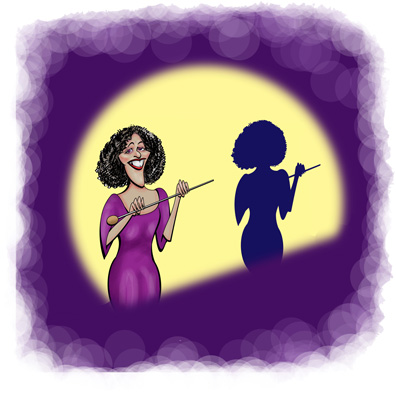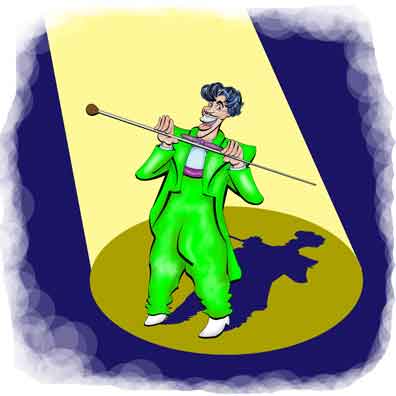Blanche Calloway

(Click to Zoom In and Out)
People often wonder why aren't there more women conductors of orchestras and other musical ensembles. I'm mean everyone knows about the Big Men Conductors - Berstein, Arturo, Seiji, Lorin, Leopold (Leopold!). And for the early jazz you had Duke, Louie, Benny, Tommy, and Artie. But why aren't there women on the podium?
Except there are. A little research shows there's a boatload. There's Inma, Karina, Lidiya, Katalin, Catherine, Ariane, Gisele, Anu, Jasmina, Diane, Xiaoying, Frieda, Hortense, Jane, Rachael, Ruth, Maria, Laura, Ausma, Valéria, Tania, Xian, Alondra, Andrea, Emmanuelle, Marin, Keri-Lynn, Barbara, Eun, Apo, Nathalie, Carolyn, Jeanette, Gemma, Avril, Julia, Karen, Tomomi, Veronika, Nezhat, Joana, Sarah, Sofi, JoAnn, Susanna, Eva, Linda, Thea, Sarah, Maria, Lisette, Antonia, Xiaoying, Karen, Margaret, Chiquinha, Xian, Suzi, Simone, Elfrida, Sian, and Imogen. And the appearance of Ladies at the Desk actually stretches well back in time.
And one of the most famous of the popular band leaders was none other than Blanche Dorothea Jones Calloway.
What was that name again?
Blanche Dorothea Jones Calloway.
What? You don't mean THE Blanche Dorothea Jones Calloway?
Yep, Blanche Dorothea Jones Calloway, the sister of Cab Calloway. Blanche led jazz bands starting in the mid-1920's and on into the late-1930's.

Blanche's Little Brother
(Click to zoom in and out.)
And it was Blanche - remembers she was Cab's big sister - who led the way and helped Cab get his career started. After she graduated from high school in Baltimore, Blanche had landed a part in a touring musical company. She rose from chorus girl to singer/skit player to lead singer. Eventually she centered her career around Chicago where she became one of the more popular nightclub performers. Cab later joined her there - he told his mother he was going to college - and Blanche was instrumental in helping Cab land his first singing roles.
Blanche got into leading an orchestra through her recording. Most jazz instrumentalists were guys and when she recorded two sides in 1925 it wasn't released just as "Blanche Calloway" or something like "Blanche Calloway with Joe Blow and His Red Hot Rooter-Tooters". Instead, the label read "Banche Calloway and Her Joy Boys". One of the Joy Boys was a 24 year old Louis Armstrong.
Blanche, though, was primarily a singer and the group was soon disbanded. But in her touring she began to take an interest in arranging and managing. In 1931, she reformed the Joy Boys, although the name was soon changed to the more straightforward (and admittedly a bit less winkable) "Blanche Calloway and Her Orchestra".
Although Blanche and her bands received favorable reviews, we must admit - and scholars have pointed out - that the cards were stacked against her in what was largely a male-dominated business. Touring in segregated states - which to be honest wasn't just in the South - also took it's toll. By the late 1930's Blanche had disbanded her orchestra and resumed her singing career, operating mostly out of Philadelphia.
But being on the road can be a drag, and in the early 1950's Blanche moved to Florida and became a DJ on a local radio station. Later she became the program director. Finally, in the 1970's she moved back to her hometown of Baltimore where she lived until 1976.
References and Further Reading
Harlem Renaissance Lives from the African American National, Henry Louis Gates and Evelyn Higginbotham, Oxford University Press, 2009.
"Blanche Calloway, Bandleader and Much More", African American Registry.
"Hi-de-ho: The Life of Cab Calloway", Alyn Shipton, Oxford University Press, 2010.